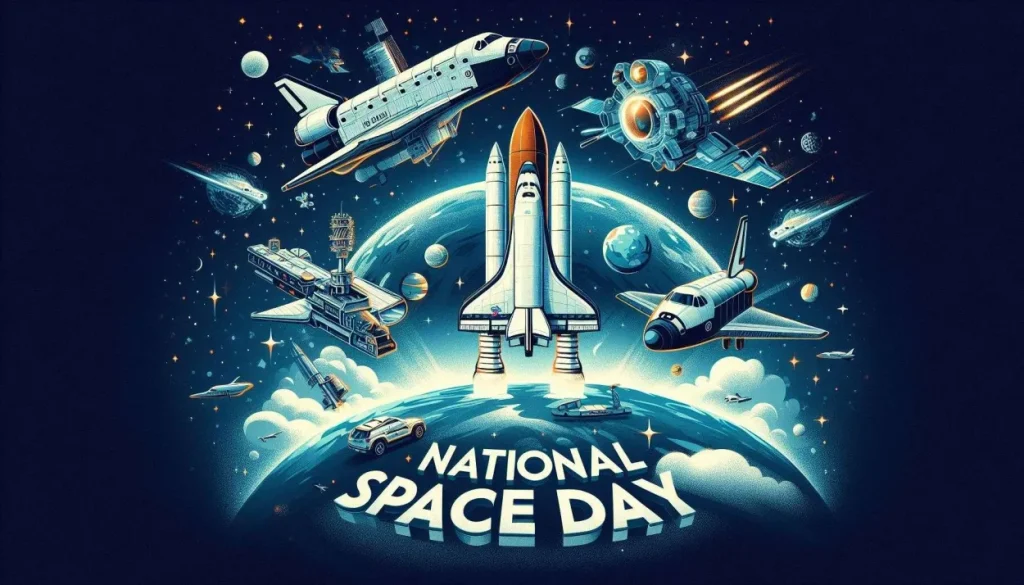Syllabus:
GS3: Achievements of Indians in science & technology; indigenization of technology and developing new technology.
Context:
The second National Space Day is being celebrated across the country on 23rd August 2025.
More on the News
- The day commemorates the successful soft landing of the Chandrayaan-3 Mission’s Vikram Lander and the deployment of the Pragyan Rover on the Moon on 23rd of August 2023.
- On this day in 2023, the Chandrayaan-3 mission accomplished the safe and soft landing of the Vikram Lander on the lunar surface.
- The theme for this year’s celebration is Aryabhatta to Gaganyaan: Ancient Wisdom to Infinite Possibilities.
Major Achievements of India in its Space Journey
- Aryabhata:
- It was India’s first satellite. It was launched in 1975, and the satellite was named after the ancient Indian mathematician and astronomer, Aryabhata.
- The purpose of the satellite was defined to explore areas including Solar Physics, Aeronomy and X-ray Astronomy.
- Mangalyaan:
- It was India’s first interplanetary mission. This historic achievement made ISRO the first Asian nation and the world’s fourth to successfully send a spacecraft to Mars.
- The mission’s primary objective was to demonstrate India’s technological capabilities for interplanetary missions, while also studying Mars’ surface features, morphology and atmosphere.
- Chandrayaan-3:
- Indian Space Research Organisation launched the Chandrayaan-3 Mission by using the Geosynchronous Satellite Launch Vehicle Mark III in 2023.
- The primary objective of this mission was to place a lander and rover in the highlands near the Moon’s south pole and to demonstrate end-to-end landing and roving capabilities.
- With this, India became the fourth country to land on the moon and the first to land near the southern polar region of the moon.
- Navigation with Indian Constellation (NavIC):
- ISRO has established a regional navigation satellite system called Navigation with Indian Constellation (NavIC). NavIC was formerly known as the Indian Regional Navigation Satellite System (IRNSS).
- NavIC offers two services, which are Standard Position Service (SPS) for civilian users and Restricted Service (RS) for strategic users. NavIC coverage area includes India and a region up to 1500 km beyond the Indian boundary.
- NavIC signals are designed to provide user position accuracy better than 20m and timing accuracy better than 50ns.
- Gaganyaan:
- Gaganyaan project envisages demonstration of human spaceflight capability by launching a crew of 3 members to an orbit of 400 km for a 3-day mission and bring them back safely to earth, by landing in the Indian sea waters.
- The project is executed using an optimal strategy, leveraging in-house expertise, Indian industry experience, academic and research capabilities and advanced international technologies.
- Next Generation Launch Vehicles (NGLVs):
- ISRO is developing Next Generation Launch Vehicles (NGLVs) with a payload capacity of up to 30,000 kg to Low Earth Orbit.
- These vehicles will feature reusable first stages, improve cost-efficiency and increase launch frequency.
- Bharatiya Antariksh Station (BAS):
- BAS is India’s planned space station for scientific research which will orbit around 400 – 450km above the Earth’s surface.
- It will serve as a platform for sustained human presence in space and foster international cooperation in scientific research.
Recent Major Developments
- Kulasekarapattinam Spaceport
- In February 2024, the Prime Minister of India laid the foundation stone of the spaceport, which enjoys a geographical advantage along the coastal Tamil Nadu’s Thoothukudi district.
- This new spaceport will be instrumental for carrying out the launches of the Small Satellite Launch Vehicles (SSLV) developed by ISRO.
- The upcoming Kulasekarapattinam spaceport will support this by providing a direct south-bound, shorter launch trajectory.
- NISAR
- The NASA-ISRO NISAR satellite was recently launched aboard a GSLV Mk-II from Sriharikota, Andhra Pradesh.
- India and the US marked their maiden space collaboration with the successful flight of a GSLV rocket that placed NISAR in a precise orbit.
- ISRO’s GSLV F-16 injected the Synthetic Aperture Radar satellite into the intended Sun Synchronous Polar Orbit (SSPO), after a flight of about 19 minutes and around 745 km.
- The GSLV-F16 marks the 18th flight of India’s Geosynchronous Satellite Launch Vehicle and the 9th operational flight with an indigenous cryogenic stage.
- This mission is the first GSLV launch to achieve a Sun-Synchronous Polar Orbit.

